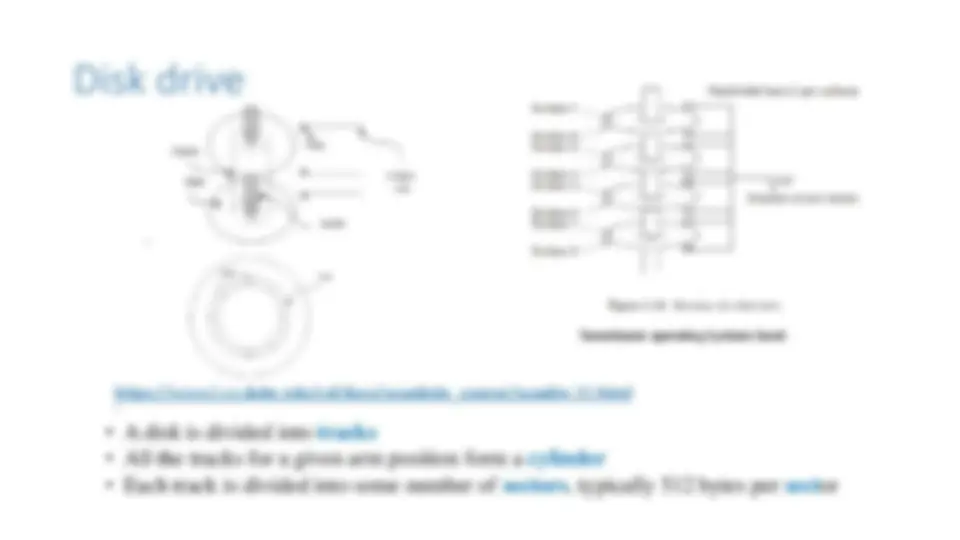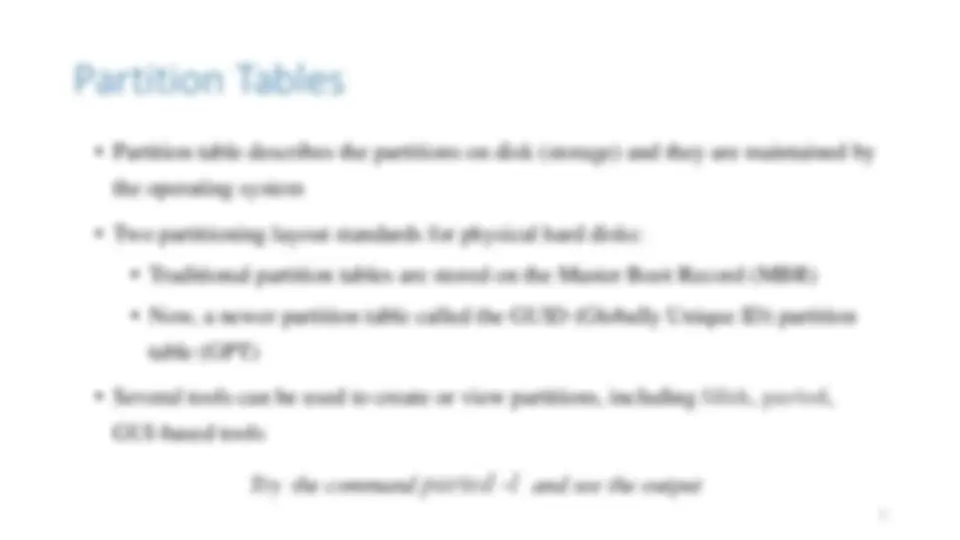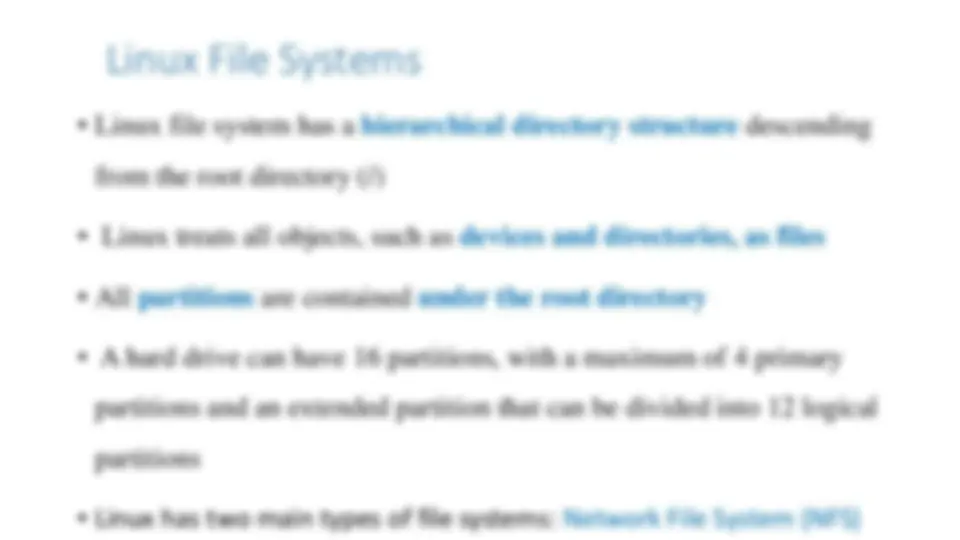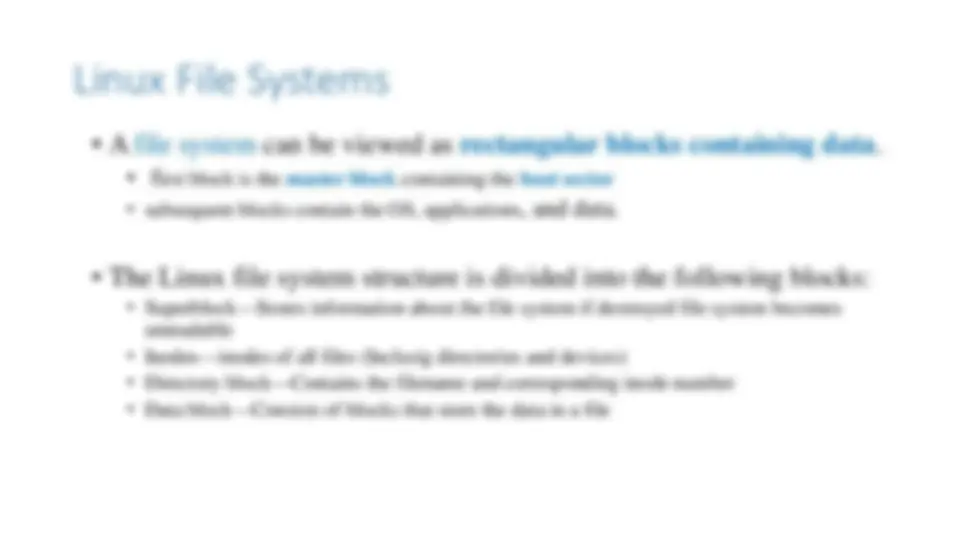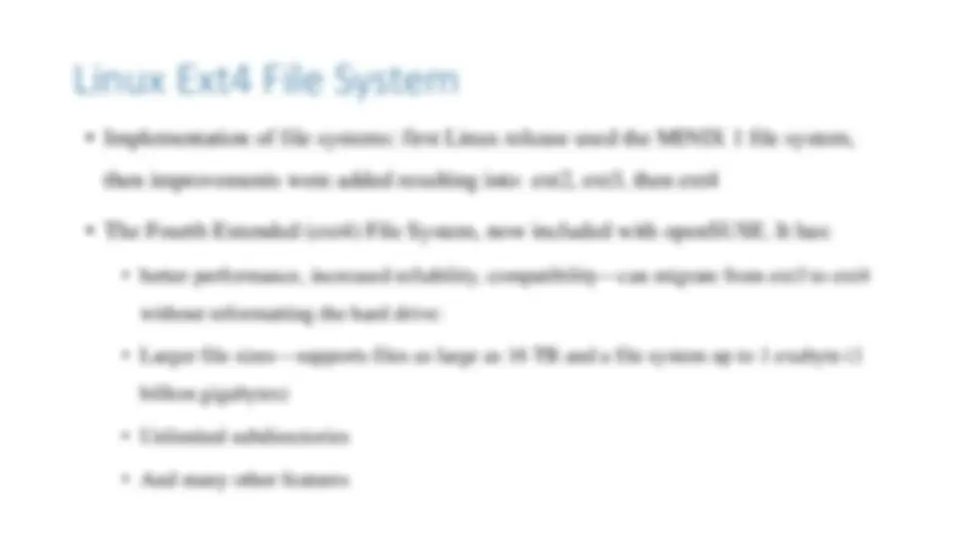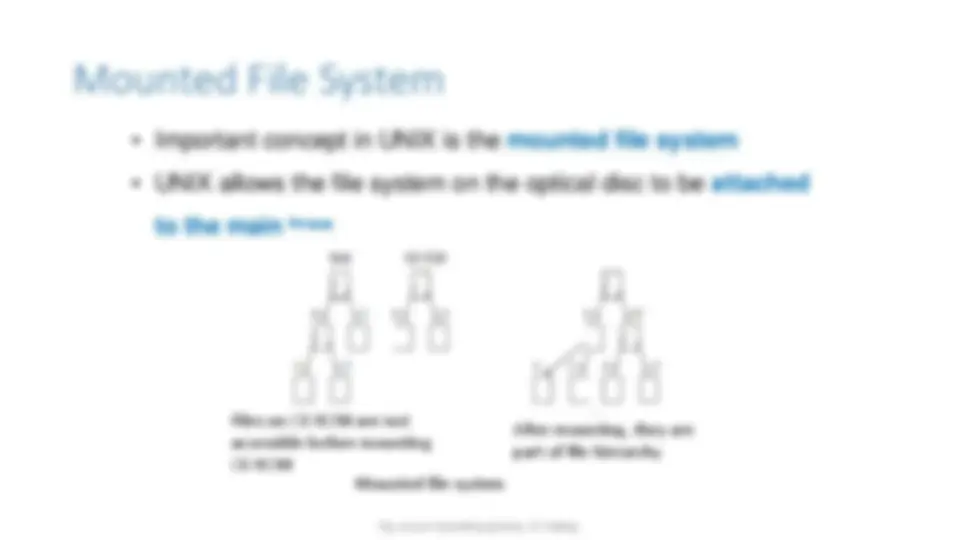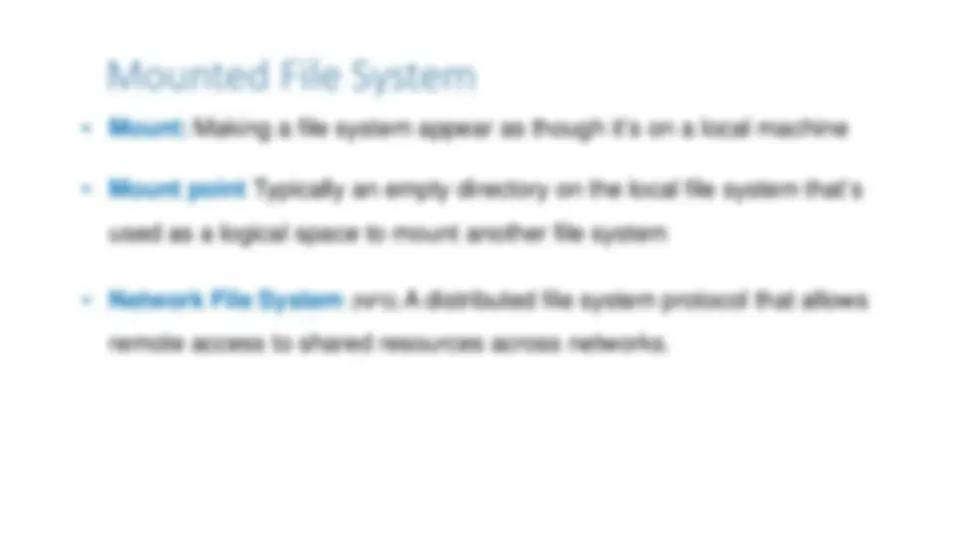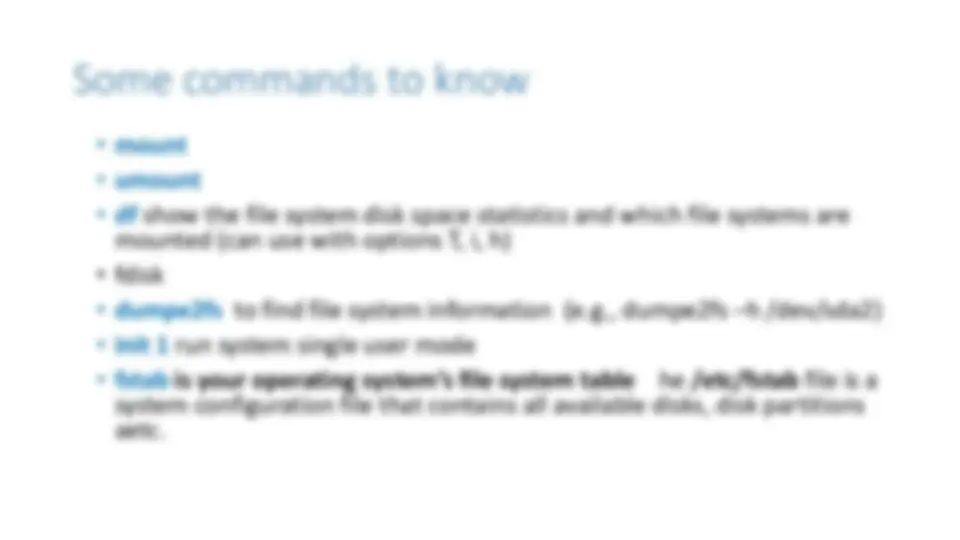Download CIT 315 Linux File System Management and Administration and more Lecture notes Computer Networks in PDF only on Docsity!
Linux File System Management
and Administration
Topics covered in chapters 14 and 15
Objectives
- Describe features of Linux file systems
- Administer the Linux file system at the command line
- Perform file system management tasks
Partitions
Separate a hard disk (or any physical device) into smaller components Each component can be treated as a different storage device and managed separately Each partition has its own filesystem Partitions are necessary you cannot just start writing files to a blank drive. You must first create at least one container (i.e., partition) with a file system. Advantages: Installing multiple operating systems Storing different file systems Limiting data growth 4
Partition Tables
- Partition table describes the partitions on disk (storage) and they are maintained by the operating system
- Two partitioning layout standards for physical hard disks:
- Traditional partition tables are stored on the Master Boot Record (MBR)
- Now, a newer partition table called the GUID (Globally Unique ID) partition table (GPT)
- Several tools can be used to create or view partitions, including fdisk , parted , GUI-based tools
Try the command parted - l and see the output
5
Filesystems
- Physical filesystems are structures that organized data on a device; there are many types, such as ext4 and xfs
- Virtual filesystems are the hierarchical structures users see when browsing the directory tree © 2019 by Pearson Education, Inc. Chapter 10: Manage Local Storage: Essentials 7 https://opensource.com/life/16/10/introduction-linux- filesystems
Linux File Systems
- Linux file system has a hierarchical directory structure descending
from the root directory (/)
- Linux treats all objects, such as devices and directories, as files
- All partitions are contained under the root directory
- A hard drive can have 16 partitions, with a maximum of 4 primary
partitions and an extended partition that can be divided into 12 logical
partitions
- Linux has two main types of file systems: Network File System (NFS)
Linux Ext4 File System
- Implementation of file systems: first Linux release used the MINIX 1 file system, then improvements were added resulting into ext2, ext3, then ext
- The Fourth Extended (ext4) File System, now included with openSUSE. It has:
- better performance, increased reliability, compatibility—can migrate from ext3 to ext without reformatting the hard drive:
- Larger file sizes—supports files as large as 16 TB and a file system up to 1 exabyte ( billion gigabytes)
- Unlimited subdirectories
- And many other features
File System Journaling and Integrity
- Linux relies on journaling file systems
- Maintain a journal describing all file-system operations in sequential order
- By sequentially writing out changes to the file-system data or metadata (i-nodes, superblock, etc.), changes will be written out, committed, to the appropriate disk location, and the corresponding journal entries can be discarded
- If a system crash or power failure before changes are committed, during restart the system will detect file system was not unmounted properly, traverse the journal, and apply the file- system changes described in the journal log
- Example using Fsck Utility
Mounted File System
Fig. source Operating systems, W. Staling
- Important concept in UNIX is the mounted file system
- UNIX allows the file system on the optical disc to be attached to the main tree Files on CD ROM are not accessible before mounting CD ROM After mounting, they are part of file hierarchy Mounted file system
Mounted File System
- Mount: Making a file system appear as though it’s on a local machine
- Mount point Typically an empty directory on the local file system that’s used as a logical space to mount another file system
- Network File System (NFS) A distributed file system protocol that allows remote access to shared resources across networks.
Partition with Fdisk
- Activity 15-2:
- Creating partitions while installing OS
- Cretaing parttitons and file systems after installation (Adding an Ext4 Partition with Fdisk)
Sources
- http://digi-cron.homeip.net/filesystems.html
- https://docs.fedoraproject.org/en-US/Fedora/25/html/Installation_Guide/appe- disk-partitions-overview.html
- Tannenbaum operating systems book
- Linux Essentials for Cybersecurity, William “Bo” Rothwell and Denise Kinsey
- CIT 315 textbook
- https://www.howtogeek.com/193669/whats-the-difference-between-gpt-and- mbr-when-partitioning-a-drive/

